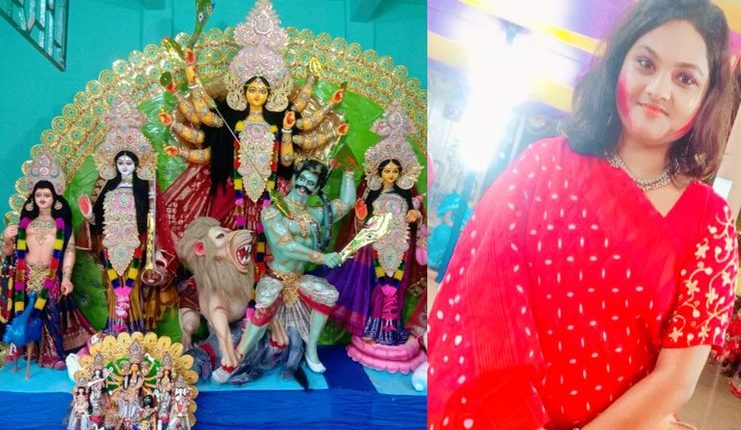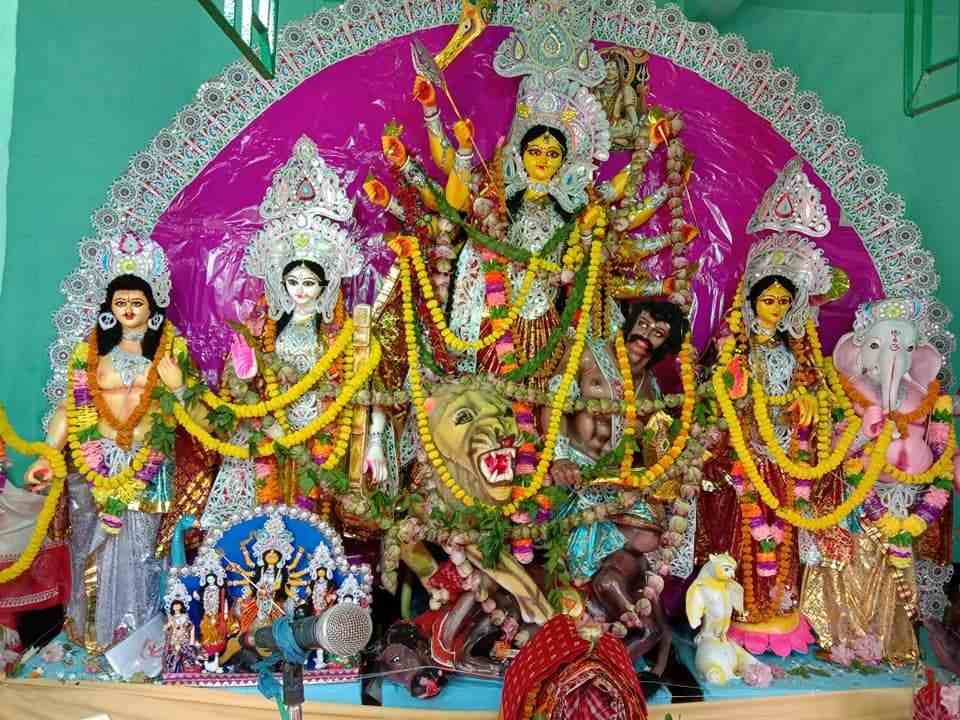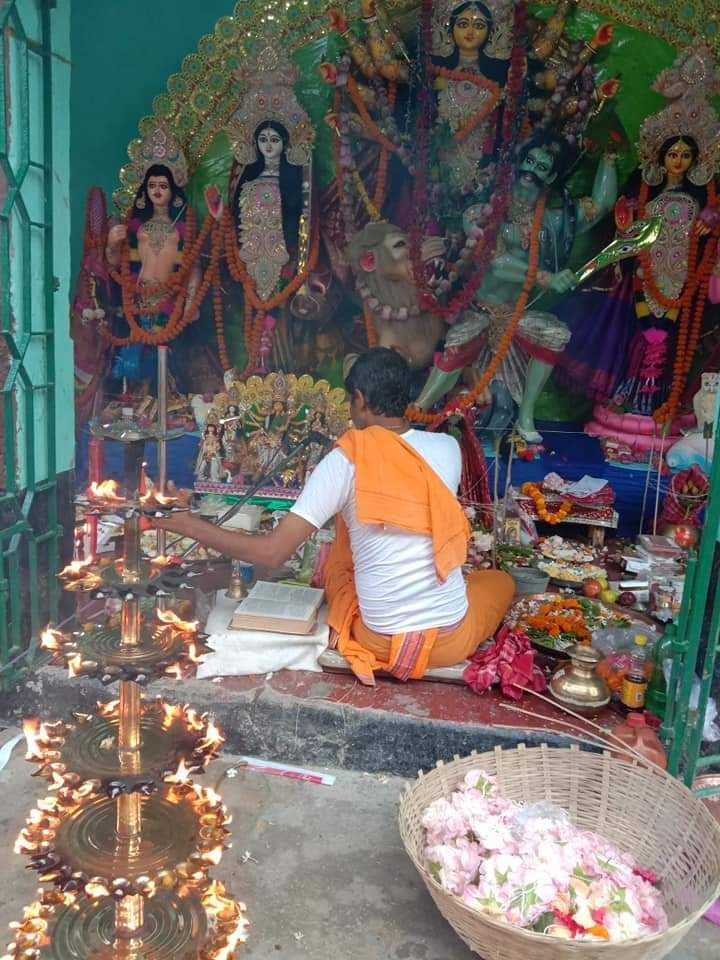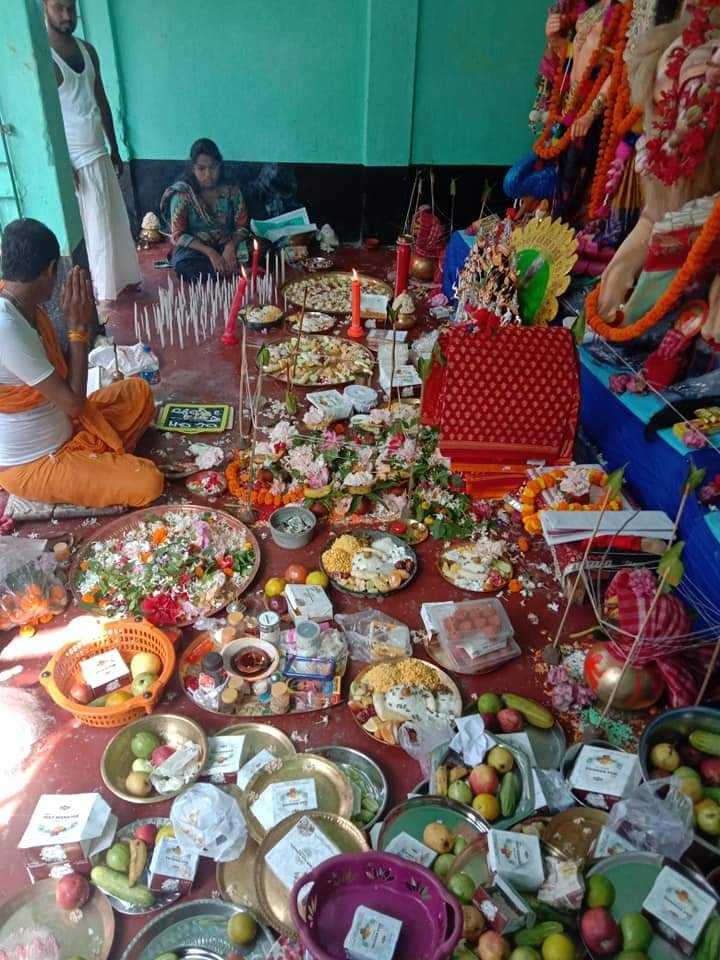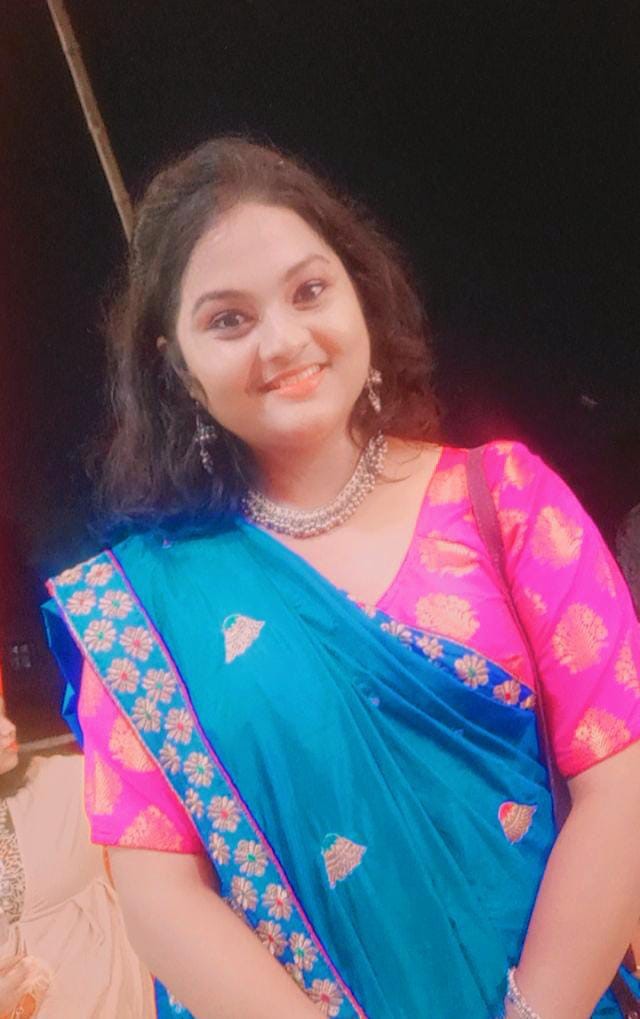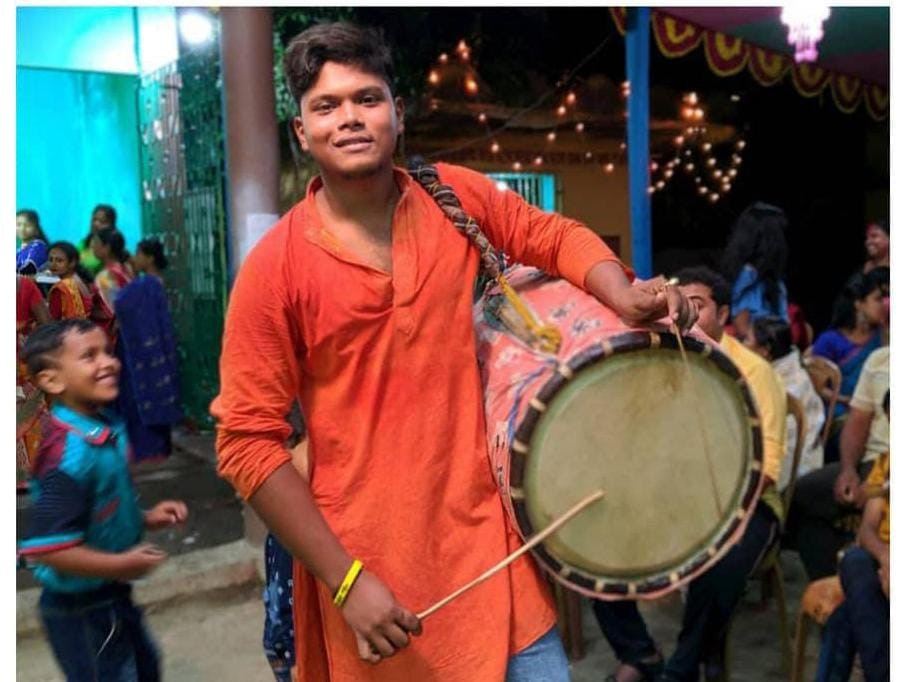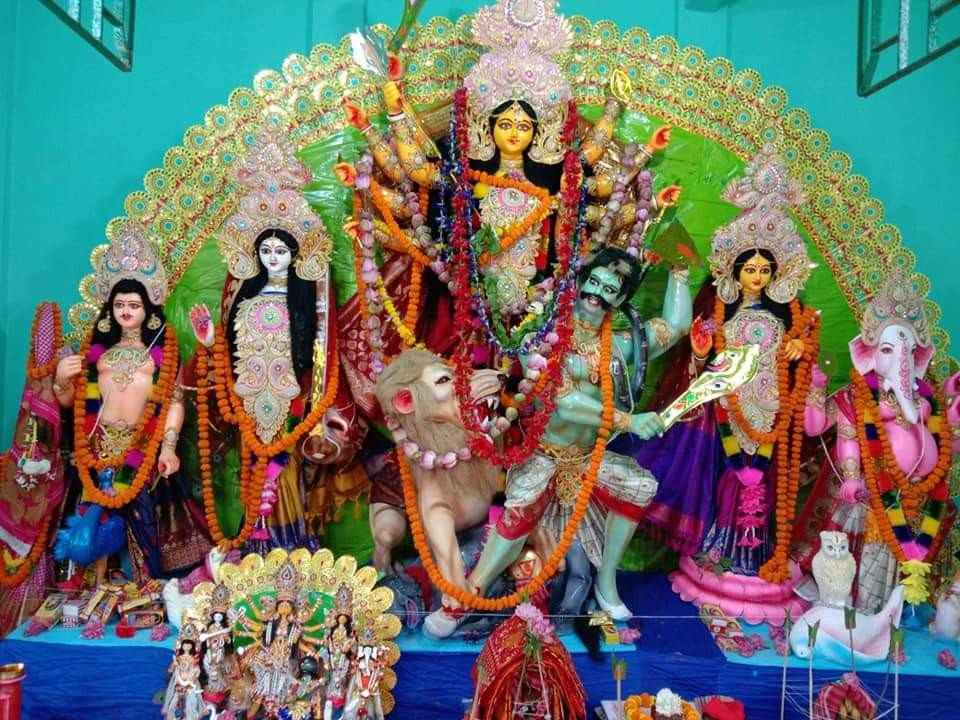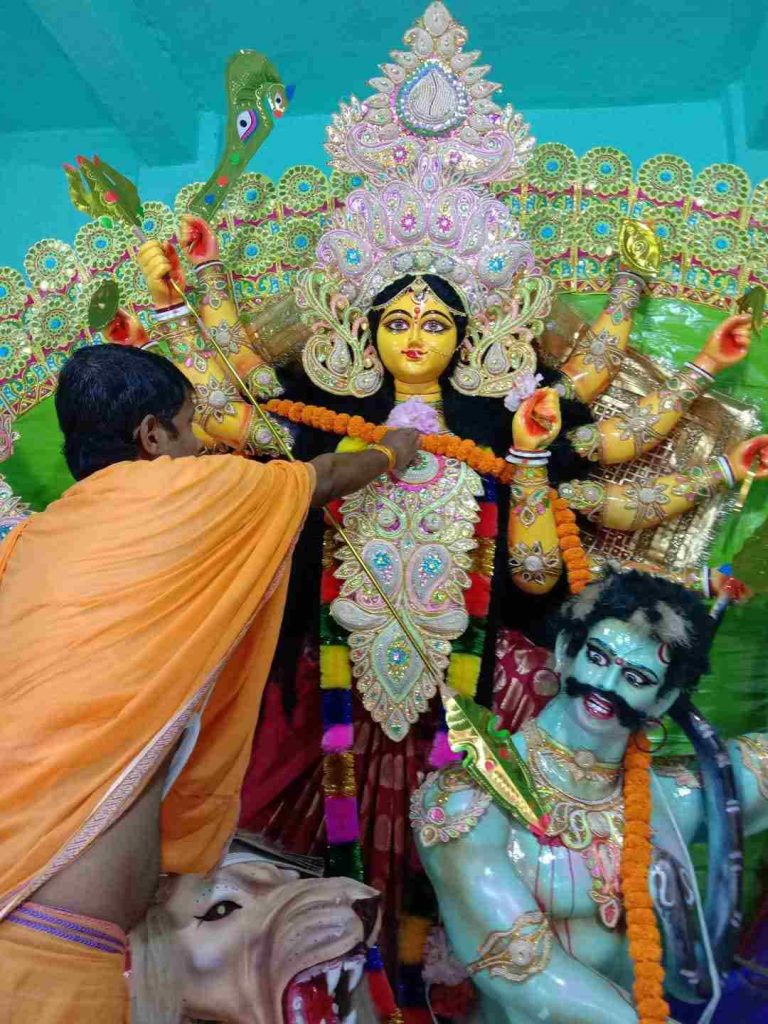A Story of Bengali Traditional Heritage Durga Puja
Maa Durga is coming, all miseries will be leaving. We have much planning and we will worship our Durga Maa.
Table of Contents
People of West Bengal are waiting for hearing the trumpet’s harmony to welcome Ma Durga after a whole year. A Story of Bengali Traditional Heritage Durga Puja. Because They believe-
“Maa Durga is coming, all miseries will be leaving. We have much planning and we will worship our Durga Maa. She will make our life cherished with full of blessing”.
The Bengalis have 13 festivals in the 12th month. That means every month they celebrate at least one festival which is associated with Bengali culture. Every festival is unique but Durga Puja is the greatest among all. The atmosphere of West Bengal changes during this Grand festival.
If anyone wants to enjoy the Durga Puja occasion greatly then they should visit the Heritage House of West Bengal. And, if you see the grandeur of heritage Puja arrangements, you will be mesmerized to know about their puja cultures and systems. Habra Das Bari (west Bengal) organizes their heritage Durga Puja every year in a traditional manner, there are no changes in their rituals even this year too.
Let us know about it and explore more.
The diversity of Durga Puja of Bengal
In West Bengal, famous clubs and heritage houses organize Durga Puja in different forms. Clubs and famous organizations celebrate Durga Puja with various themes that can represent any kind of social message or a particular topic, lighting, and many more. While Durga Puja of Heritage houses occurs with full of traditions and simplicity.
There are several heritage Durga Puja in Kolkata and other parts of West Bengal. The heritage houses in West Bengal where Durga Puja has been celebrated from generation to generation. The Durga Puja celebration in Heritage houses is reached with several rituals and traditions. Heritage houses welcome Uma as their daughter who came to live in her father’s house only for 4 days from Kailash the house of Lord Shiva, her husband. She comes to visit the maternal house with her children and cherishes her family with open arms and a smile and love. So, if anyone to feel the tradition and actual culture of West Bengal then should visit the Heritage houses.
You can feel the better taste of it in the Habra Das Bari Durga Puja. They always choose to welcome their Maa Durga especially. A group of family members congratulates Devi maa with a flower garland, deep, and sindoor for welcoming their house.
Durga Puja in Heritages Houses of Bengal
Most of the Heritage houses were owned by any Zamindar from the pre-independent Era of India. Most of the descendants successfully continue the tradition of Heritage houses of West Bengal especially the tradition of celebrating Durga Puja.
The heritage house of the Das family of Habra, West Bengal is one of those Heritage houses, which is famous for Durga Puja. The age of the Durga Puja Festival of this house is around 250 years old. Before the Independence, the family belongs to the Barisal district of present Bangladesh. From that time, the great grandparent of the house started the Durga Puja celebration which was quite new and magnificent at that time. Actually, before 100 or 200 years ago, Durga Puja was only celebrated by the Zamindar family as a family function. Because the Durga Puja celebration considers so cultural and expensive and that time, not every family had financial support to celebrate this, Puja.
But the Zamindar Das parents successfully celebrated their ritualistic Durga Puja festival in the house. They invited people from their states and another region to be part of or visit the festivals. In undivided Bengal, the Das family was one of those rich families who celebrated Durga Puja grandly. Not only that few families in Bangladesh lavishly celebrated Durga Puja, Das Family is one of those who are keeping continuous their heritage puja occasion still now.
Traditions of Durga Puja in Heritage Houses of Bengal
After the partition of the nation, the region where the Das family lived, came under the Habra, West Bengal. The present generation of these families continues the traditions of Bengali culture Durga Puja with the same dedication as their ancestors had. The total 10 days of Durga Puja include several rituals and those rituals are precisely maintained by the Heritage House.
While the Durga Puja arranged by several clubs only put their focus on themes and decorations. Bengali Durga Puja rituals of Heritage houses are a little different from each other. As members of Heritage houses welcome Devi Durga as Uma, their beloved daughter; so, they pamper her all day with gifts and several cooked foods known as ‘Bhog’. Most of the rituals are related to this section. Bhog is a combination of different veg items specially cooked for Uma. Bhog is generally given as a lunch to Uma and includes items like pulao, Khichdi, fried veggies, vegetable curry, papad, sweets, fruits, paneer, halva, and many more. These items at first given to Uma to taste and this arrangement is known as ‘Bhog Nevadan.’ after that, the family members and invited people will enjoy the Bhog in their lunch as it becomes holy with the touch of their daughter, Uma.
Different Heritage families have their unique style of the Bhog Nevadan. For example, the in Durga Puja of Das family of Habra, only the adult grown man of the family can arrange the Bhog Nevadan and other family members or guests can help to make plates. Many years ago, another ritual was included in the Durga Puja Festival which was the Sacrifice of the life of an animal(goat). But this ritual is now not continued by the present generation.
Traditional Dress Code and Durga Puja
Not only traditional rituals, but the dress code for Durga Puja is also versatile. Bengali love to maintain the traditional dress code as well during the Durga Puja Festival. Saree and Punjabi (men’s kurta) are the dress code for Bengali women and men respectively. Bongs may wear western dresses when they are going for Pandal hopping. But for the Ashtami Pushpanjali, all Bengali men, women, and teenagers wear saree and Punjabi. Not only for the morning Pooja at the Ashtami they follow the same dress code but in a more gorgeous style. Young to senior couples match the color of the saree and Punjabi to look a perfect match for each other. On the Vijayadashami, the married women wear white saree with a red border and exchange sindoor with each other.
White saree with red par is the traditional dress code for Bengali married women. The member of the Das Family, always choose to go with tradition. Women and men wear sarees and Punjabi and involve in a cultural part in a ritualistic manner.
According to mythology, Dhak is a vital instrument, it helps to remove all the negativity of the house and the sound of Dhak protects people from evil eyes. Without it, Durga Puja will not be completed. Following the facts and tradition, men members of the Das family, make the Puja atmosphere more beautiful by beating the Dhak in a rhythmic way. Everyone in the house enjoys the rhythm of Dhak, and it is the specialty of their heritage house that they worship the Durga maa with traditional Dhak and flower incense. So, if you want to know how attractive the Bengali women and men are and the rhythm of traditional Dhak, then visit “Das er Barir” (Das Family’s) Durga Puja in West Bengal, especially the Ashtami night.
Durga Puja of Bengal: a Combination of Traditions, Culture, and Emotions
Everyone knows Bongs love to read and every Bengali have a mini library in their house. The famous publishers of Bengal also publish their special editions for the Puja vacation. Bengalis become crazy with joy when the publishers announce the launching date of the special Puja editions. Not only that every Bengali newspaper contains Bengali articles on Durga puja.
People always say it’s ‘Bangalir Durga puja’ (Bengali festival), but it is never limited to the Bengali community. Many famous people from predominant India even the members of the British Empire love to visit the Durga Puja Heritage houses. As Bengalis are very welcoming so they do not hesitate to invite people even the British. As the Durga Puja Festival of the Das family was famous in Bangladesh, so many names of famous people were associated with this festival. Respected people like Kavi Guru Rabindranath Tagore, Kazi Nazrul Islam, and many more iconic persons left their footprint on the Heritage building of the Das family during the Durga Puja Festival.
In West Bengal Durga Puja is not just a festival, it is an emotion. That is why when their dearest Uma starts her preparation to go back to her husband’s house on Vijayadashami; every Bengali can feel their heavy heart. Like Durga Puja, no such celebration has the combination of the smile of joy and tears of love. Uma has to promise that she will come again next year for 10 days before starting her journey with the Devi Ganga who leads her towards the Kailash. This bond between the daughter and her family even after her marriage, is unbreakable. You can feel it if you visit Habra Das Bari Durga Puja, a Heritage
House in West Bengal. No matter how powerful she is and how far she lives, every daughter is welcomed by her parents and family always in her life.
Every Durga Puja of West Bengal, both Clubs and Heritage houses are unique in their way. One side is full of lights, new ideas, creativity, and a festive mood. While other is a combination of traditions, culture, rituals, emotions, and joy. Because of the diversity which is connected with the deep emotions shared by a daughter and her family; UNESCO awarded the Durga Puja of West Bengal as a World heritage. Durga Puja heritage UNESCO award is another feather on the crown of Bengal and now the whole world can see how magnificent a celebration can be.
FAQ Section
Q1. Is this a real story of Bengali Traditional Heritage Durga Puja?
Ans- Yes. The above-mentioned information is based on real facts, this is a real story of West Bengal heritage tradition.
Q2. Which festival is famous in West Bengal?
Ans- Mostly, the Bengali community belongs in West Bengal, so Durga Puja is the greatest and most famous festival here.
Q3. Where does situated the traditional heritage of the Das Family?
Ans- The origin of the Zamindar Das family is in the Barisal district in Bangladesh. But in the present time, they live at Habra in North 24 Parganas in West Bengal. And they continue their traditional heritage Durga Puja from year to year.
Q4. Why do Bengali people obey and respect all the Puja rituals?
Ans- According to mythology, Durga Puja conveys a great significance to human life. And Durga Devi considers the best protector who can save the whole world in a divine way. Not only that but also there are so many reasons to obey and respect all the rituals.



